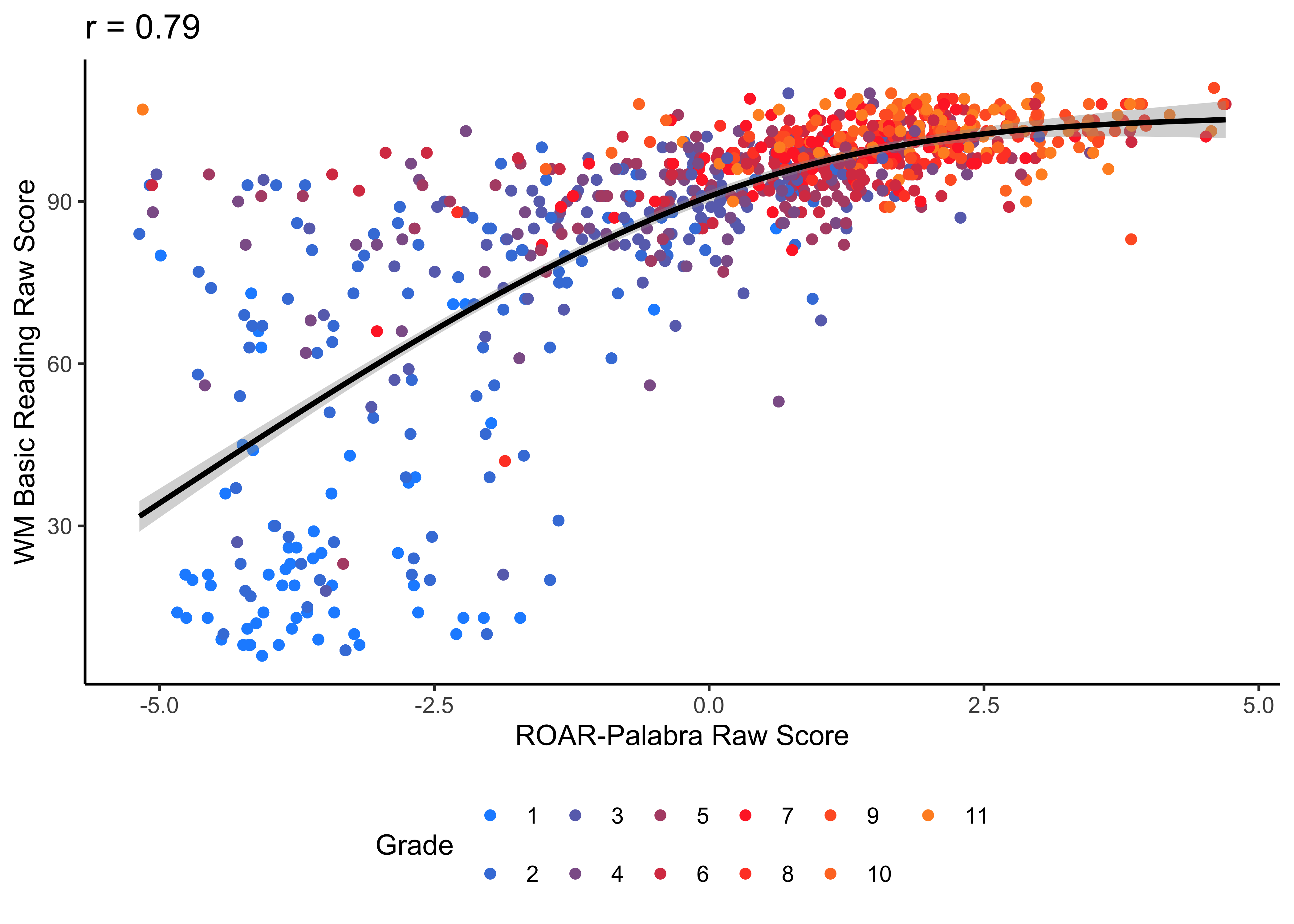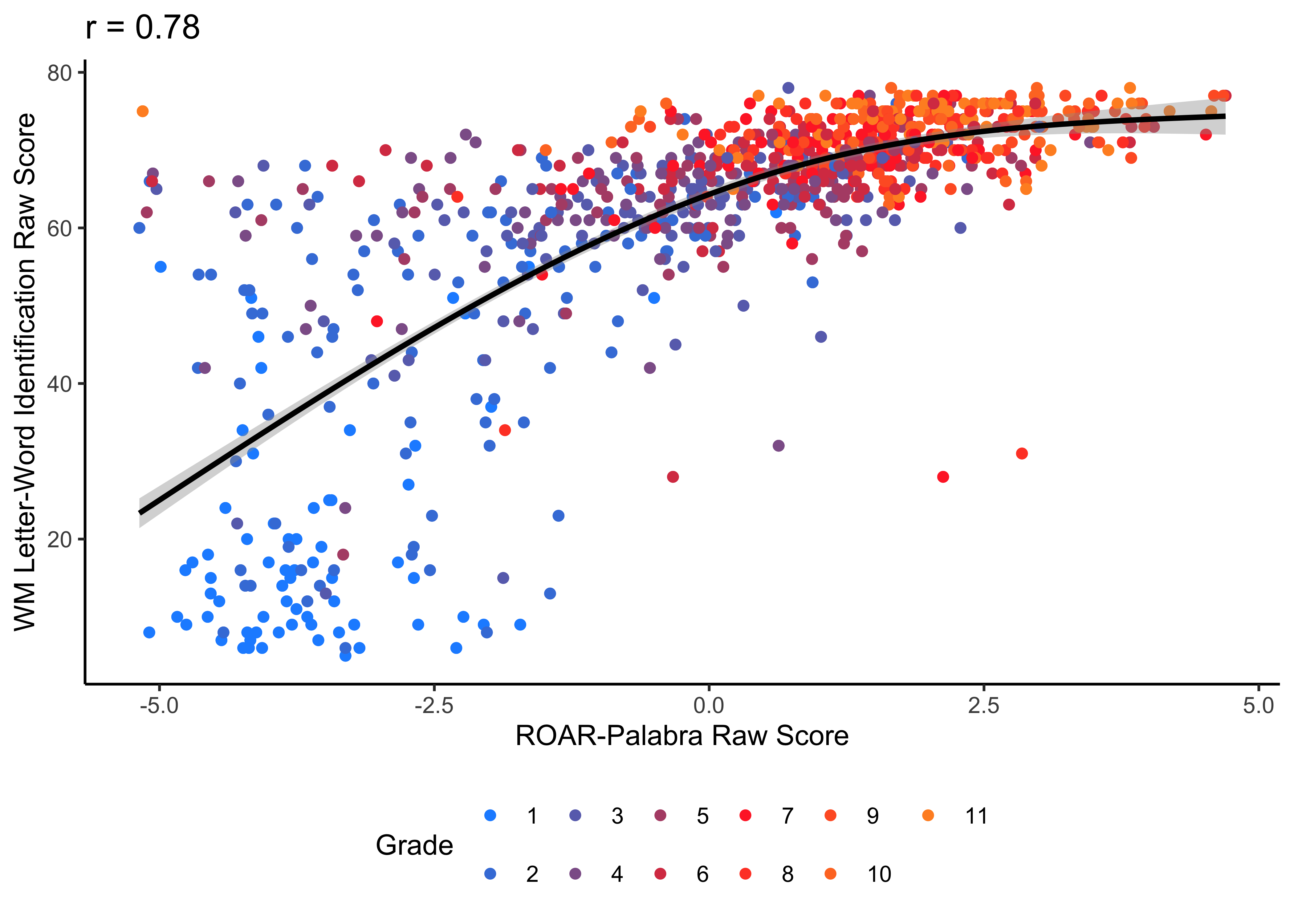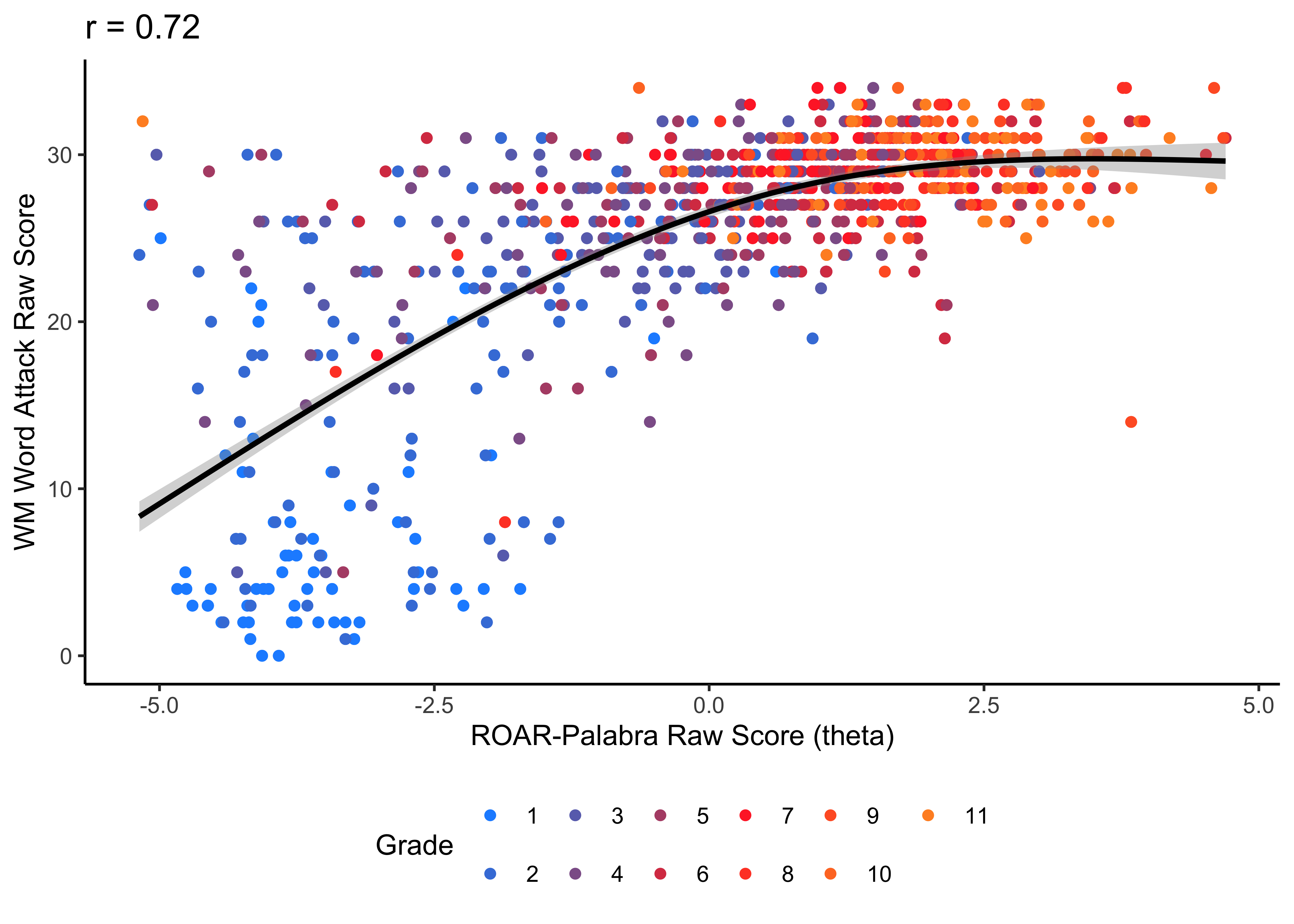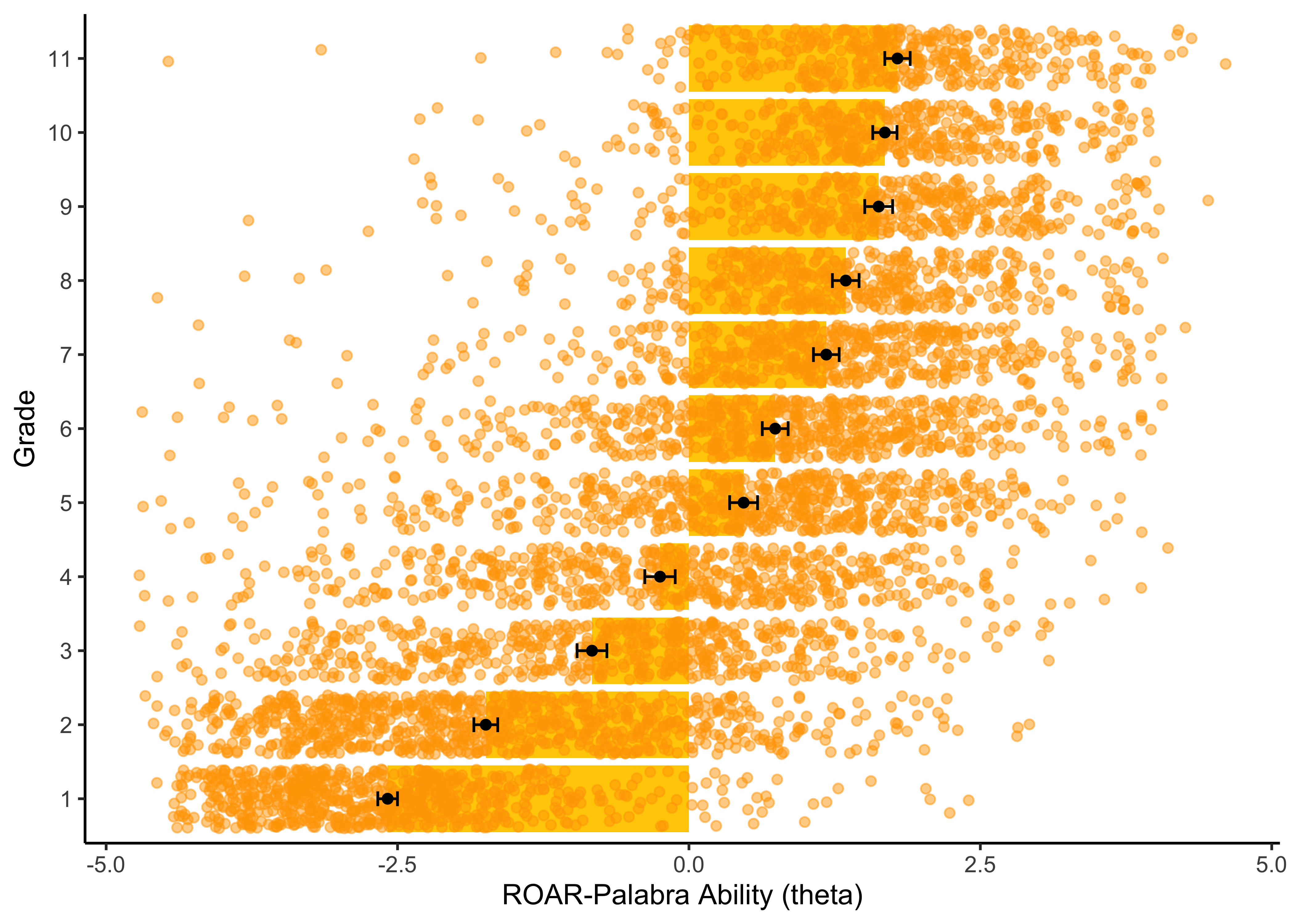
26 Spanish Single Word Recognition (ROAR-Palabra) Concurrent Validity
ROAR-Palabra is designed to measure the latent construct of single word reading. Analogous to the concurrent validity analyses for ROAR-Word, we first establish that the silent, lexical decision task in ROAR-Palabra taps into the same latent construct by comparing ROAR-Palabra scores to a variety of other standardized measures of single word reading (see Section 23.1).
Figure 26.1 shows the correlation between ROAR-Palabra raw scores (\(\theta\)) and a composite of Woodcock Muños (WM) Letter-Word Identification (real word reading) and Word Attack (pseudoword reading) raw scores. The correlation between ROAR-Palabra and WM is not as strong as the correlation between ROAR-Word and WJ (Figure 23.1; Figure 23.2; Figure 23.4) but this likely has to do with ceiling and floor effects in the sample: in transparent orthographies like spanish there is substantial less variation in single word reading skills. Figure 26.2 and Figure 26.3 show correlations for WM subtests separately.
26.1 Convergent validity with oral measures of single word reading
26.1.1 Woodock Muñoz



26.1.2 Growth Over Time
Another source of validation is examining growth trajectories of ROAR-Palabra scores over time. Figure 26.4 shows how ROAR-Palabra score steadily increase in each grade and Figure 26.5 shows grade level norms for ROAR-Palabra.

